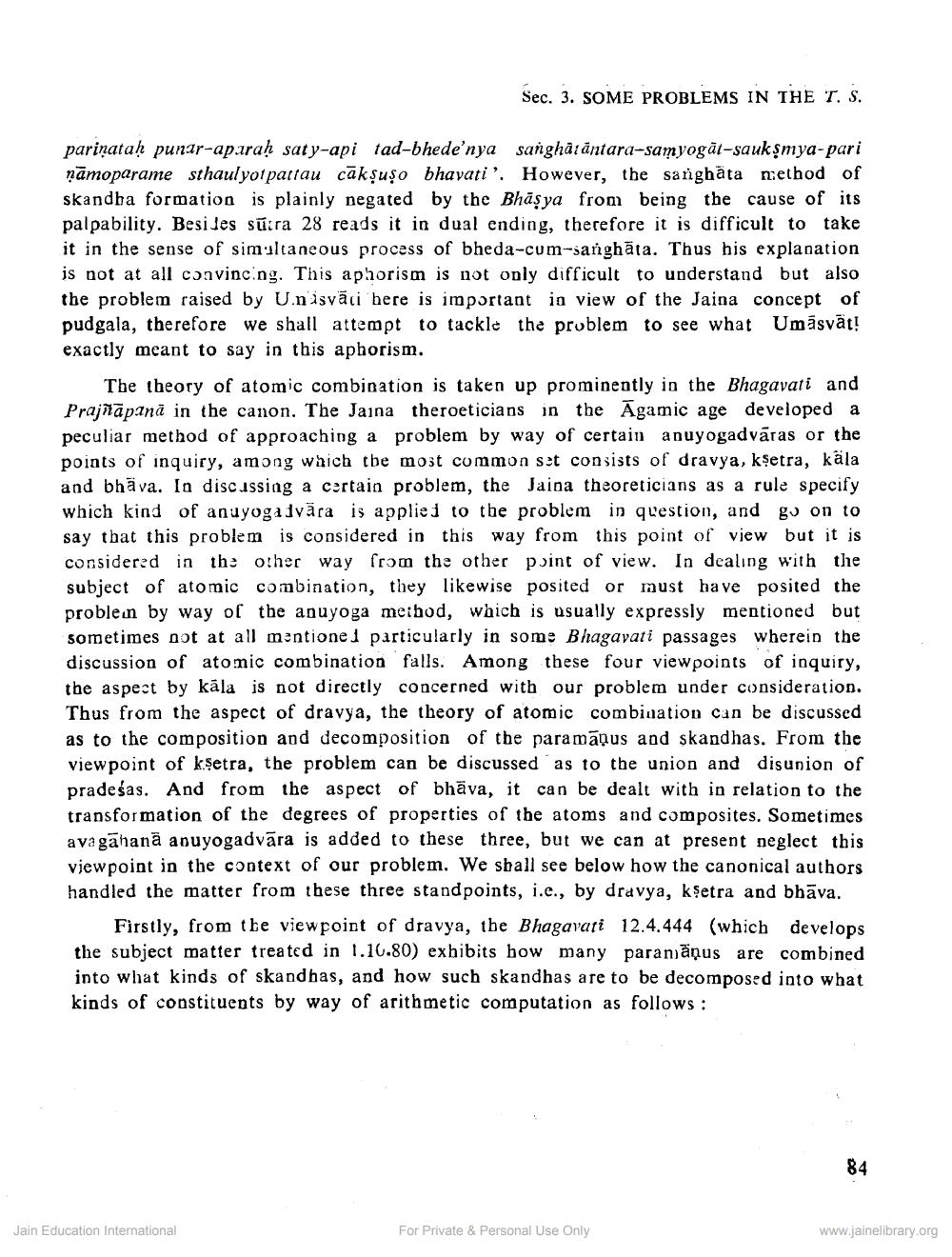________________
Sec. 3. SOME PROBLEMS IN THE T. S.
pariņatah punar-aparaḥ saty-api tad-bhede'nya sanghai antara-samyogāt-saukṣmya-pari ņāmoparame sthaul yoipattau cākşușo bhavati'. However, the sarghāta method of skandha formation is plainly negated by the Bhāşya from being the cause of its palpability. Besides sūira 28 reads it in dual ending, therefore it is difficult to take it in the sense of simultaneous process of bheda-cum-sanghāta. Thus his explanation is not at all convincing. This aphorism is not only difficult to understand but also the problem raised by Unisvāci here is important in view of the Jaina concept of pudgala, therefore we shall attempt to tackle the problem to see what Umásvät! exactly meant to say in this aphorism.
The theory of atomic combination is taken up prominently in the Bhagavati and Prajñāpanā in the canon. The Jaina theroeticians in the Āgamic age developed a peculiar method of approaching a problem by way of certain anuyogadvāras or the points of inquiry, among which the most common set consists of dravya, kşetra, käla and bhāva. Io discussing a certain problem, the Jaina theoreticians as a rule specify which kind of anuyoga dvära is applied to the problem in question, and go on to say that this problem is considered in this way from this point of view but it is considered in the other way from the other point of view. In dealing with the subject of atomic combination, they likewise posited or must have posited the problein by way of the anuyoga meibod, which is usually expressly mentioned but sometimes not at all mentionel particularly in some Bhagavati passages wherein the discussion of atomic combination falls. Among these four viewpoints of inquiry, the aspect by kāla is not directly concerned with our problem under consideration. Thus from the aspect of dravya, the theory of atomic combination can be discussed as to the composition and decomposition of the paramāņus and skandhas. From the viewpoint of kşetra, the problem can be discussed as to the union and disunion of pradeśas. And from the aspect of bhāva, it can be dealt with in relation to the transformation of the degrees of properties of the atoms and composites. Sometimes avagānanā anuyogadvāra is added to these three, but we can at present neglect this view point in the context of our problem. We shall see below how the canonical authors handled the matter from these three standpoints, i.e., by dravya, kşetra and bhāva.
Firstly, from the viewpoint of dravya, the Bhagavati 12.4.444 (which develops the subject matter treated in 1.10.80) exhibits how many paran äņus are combined into what kinds of skandhas, and how such skandhas are to be decomposed into what kinds of constituents by way of arithmetic computation as follows:
Jain Education International
For Private & Personal Use Only
www.jainelibrary.org




